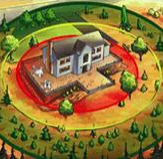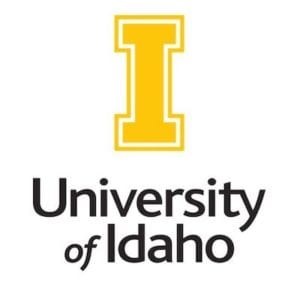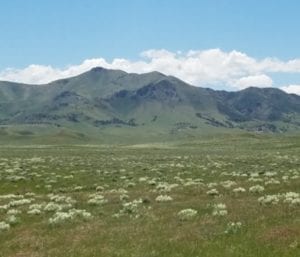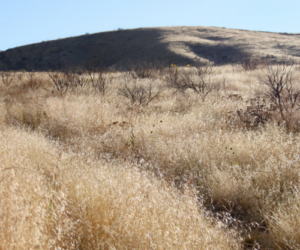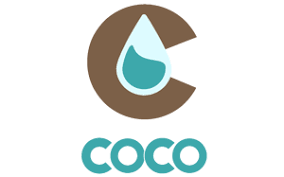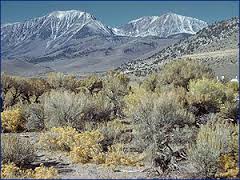Training / Class
Visit course website.
Learn how ESCAPE (WUI Fire Evacuation and Sheltering Considerations — Assessment, Planning, and Execution) provides crucial guidance for wildfire evacuation planning, enhancing life safety for civilians and first responders.
This course is available anytime and takes about 3 hours to complete.
More information and registration.
Explore the Role of Ranchers in Fire Ecology and Land Management
While most wildfire research in the western U.S. focuses on public lands (e.g., Forest Service, BLM, Park Service), private ranches—especially across the Southern Rockies—play a crucial role in managing biodiversity, supporting rural livelihoods, and mitigating wildfire risk. Ranchers are increasingly engaging in land stewardship and collaborative research to build resilience against extreme wildfires.
About the Western Ranch Management and Ecosystem Stewardship Program (WRMES)
WRMES promotes sustainable ranching practices that support forests, rangelands, wildlife, water resources, and
rural communities in the Intermountain West by providing classes, research, outreach, and a masters degree.
Highlights (4 Weeks):
• Visit 8–10 working ranches representing diverse ecosystems and management approaches.
• Learn strategies directly from ranchers creating both ecological and economic sustainability
More information and registration.
Grass Identification Course
Thursday-Friday, June 12-13, 2025
Rinker Rock Creek Ranch
Rock Creek Road, Blaine County (near Hailey, Idaho)
Rinker Rock Creek Ranch will be offering a two-day field course taught by Justin Trujillo (author of A Field Guide to Grasses and Grass-like Plants of Idaho) that will focus on learning the basic morphology of grasses and grass-like plants. This course will cover identification of mostly cool- and some warm-season grasses common in the sagebrush steppe. Students will receive a plant press, hand lens, and identification book for the course fee.
This course does not include meals; those enrolled should plan to bring food/snacks and water into the field each day.
Camping will not be available on the ranch. Here are some campsites nearby:
- Picabo Angler RV Park
- Hayspur Fish Hatchery Campground
- Stanton Crossing Campground
- Silver Creek West
- Silver Creek East
This course is eligible for 6 CEU credits through the Society for Range Management.
Register early – the course is limited to 20 participants.
Questions? Please email Justin Trujillo (jjtrujillo2003@gmail.com) or Dr. Tracey Johnson (traceyj@uidaho.edu)
Training details and registration.
In this streamlined class, you’ll learn how to guide a focused and actionable Community Wildfire Protection Plan process that delivers results. You’ll learn to:
- Map out each stage of CWPP development
- Assess local wildfire risks using trusted tools
- Engage your community and prioritize treatments
- Build and implement a results-driven action plan
Training will be JUNE 9 – 10
8 A.M. – 5 P.M. Redmond Fire and Rescue
341 NW Dogwood Ave. Redmond, Oregon
This three-day short course covers the unique taxonomy associated with the Sunflower Family, Asteraceae. Basic terminology, dissection skills, and use of a key are critical elements of this class. We will cover not only how to identify sunflowers, but how to collect and press them for future reference or for the purpose of mailing to others for identification or verification. You can anticipate seeing about 60 different sunflower genera. This class is for participants with beginner through intermediate skills.
Instructor: Arnold (Jerry) Tiehm, M.S, Great Basin Flora Specialist
atiehm@unr.edu
Cost: $240 for non-students, $120 for students
Fees for optional credit units are paid separately when you enroll with UNR for Spring or Fall semester.
The simplest method for payment is to bring a check to class made out to Board of Regents. Contact the instructor for other payment options.
Registration: Sign up by emailing the instructor at atiehm@unr.edu
Timing: Class will be July 8-10, 2025
Additional details: Class size is limited to 30 participants.
Class will be from 8:00 am-12:00 pm, one hour lunch break, 1 pm-5 pm daily. It will be held in room 300G of Fleischman Agriculture at UNR. Hot water and some coffee and tea will be available in the classroom. This class may be taken for 1 unit of optional credit during either semester. Let the instructor know if you want to receive credit so you can obtain a class number. You must also pay the separate credit fees with UNR.
Course registration
Annual conference focused on educational presentations regarding noxious weeds, identification, and management for the Southwest.
Early Registration: $150 (Mar. 1 – June 30)
Regular Registration: $175 (July 1 – Aug. 4)
Late Registration: $200 (Aug. 5 – 7)
Who: This training course was developed in concert with Society for Ecological Restoration and BLM’s National Training Center. It is available to restoration practitioners within the DOI and our partners. Target Audience: Natural Resource Specialists, Fire, Fuels, Emergency Stabilization and Rehabilitation, Botanists, Wildlife Biologists, Ecologists, Range, Minerals, Mining and Reclamation
What: This self-paced on-line course is intended to serve as an introduction to seed technology and arid and semi-arid lands restoration as a first step towards more in-depth in person restoration and revegetation courses. It provides world-class training on restoring dry land ecosystems, which are critical resources in tackling the climate crisis. By the end of the course, participants will have an understanding of: Ecological restoration principles, standards of practice, and concepts to increase the success of restoration efforts, arid/semi-arid ecosystems and the challenges they pose to successful restoration, and how to apply ecological restoration best practices and concepts in restoration planning in arid and semi-arid ecosystems.
Where: Request an account here eDOI and search for: Arid and Semi-Arid Lands Seed Technology and Restoration.
The course consists of the following modules/lessons. Each are accessed separately and must be taken in sequential order.
Module 1: Introduction
Module 2: The National Seed Strategy
Module 3: Principles, Standards and Concepts
Lesson 3.1: Principles and Standards for the Practice of Ecological Restoration
Lesson 3.2: Principles, Standards and Concepts – Native Seed Standards
Module 4: Arid and Semi-Arid Systems
Lesson 4.1: Overview of Drylands
Lesson 4.2: Restoration Challenges
Lesson 4.3: Current Knowledge
Module 5: Developing and Implementing a Restoration Plan
Introduction
Lesson 5.1: Project Context
Lesson 5.2: Vision, Goals, and Objectives
Lesson 5.3: Plant Materials Selection and Procurement
Lesson 5.4: Site Preparation
Lesson 5.5: Developing and Implementing Seeding and Planting Strategies
Lesson 5.6: Monitoring and Management
Lesson 5.7: Putting It All Together
Instructor: Arnold (Jerry) Tiehm, Great Basin Flora Specialist, atiehm@unr.edu
Description: This three-day short course covers the unique taxonomy associated with the sunflower Family, Asteraceae. Basic terminology, dissection skills, and use of a key are critical elements of this class. The course will cover not only how to identify sunflowers, but how to collect and press them for future reference or for the purpose of mailing to others for identification or verification. You can anticipate seeing about 60 different genera. This class is for participants with beginner through intermediate skills.
This class may be taken for 1 unit of optional credit during either semester. Let the instructor know if you want to receive credit so you can obtain a class number. You must also pay the separate credit fees with UNR.
Class size is limited to 30 participants.
When: July 8-10, 2024. Class will be from 8:00 am -12:00 pm, one hour lunch break, 1 pm – 5 pm daily.
Where: It will be held in room 300G of Fleischman Agriculture at UNR. Hot water and some coffee and tea will be provided.
Cost: $ 240.00 non-student, $ 120.00 student. Plan on bringing a check to class made out to Board of Regents.
Sign up by emailing the instructor at atiehm@unr.edu.
The Community Wildfire Mitigation Best Practices training is designed to increase the skills of the professional mitigation practitioner and individuals who run mitigation programs. Participation in the 9-week virtual course is not guaranteed as we endeavor to provide training to individuals who lead or have responsibility for community wildfire mitigation programs. Acceptance is on a per person basis and is not transferable to another person. If there are multiple people from an organization signing up please ensure they sign up individually.
The Bureau of Land Management and the Great Basin Fire Science Exchange have partnered to offer the following Restoration of Sagebrush Ecosystems Class, see course flyer.
What: Restoration of Sagebrush Ecosystems Class
Why: Gain foundational knowledge and skills needed to plan, implement, and evaluate management strategies and restoration practices to address threats to sagebrush ecosystems from landscape to local scales.
Who can attend: DOI and Non-DOI Land Management Professionals
When: 3-7 March 2025
Where: Hyatt Place South Reno, NV
How: DOI link Course: Restoration of Sagebrush Ecosystems (doi.gov), non-DOI registration instructions


